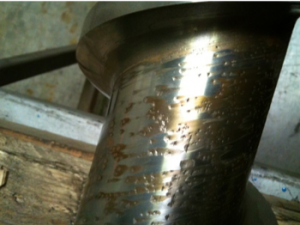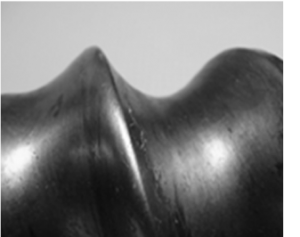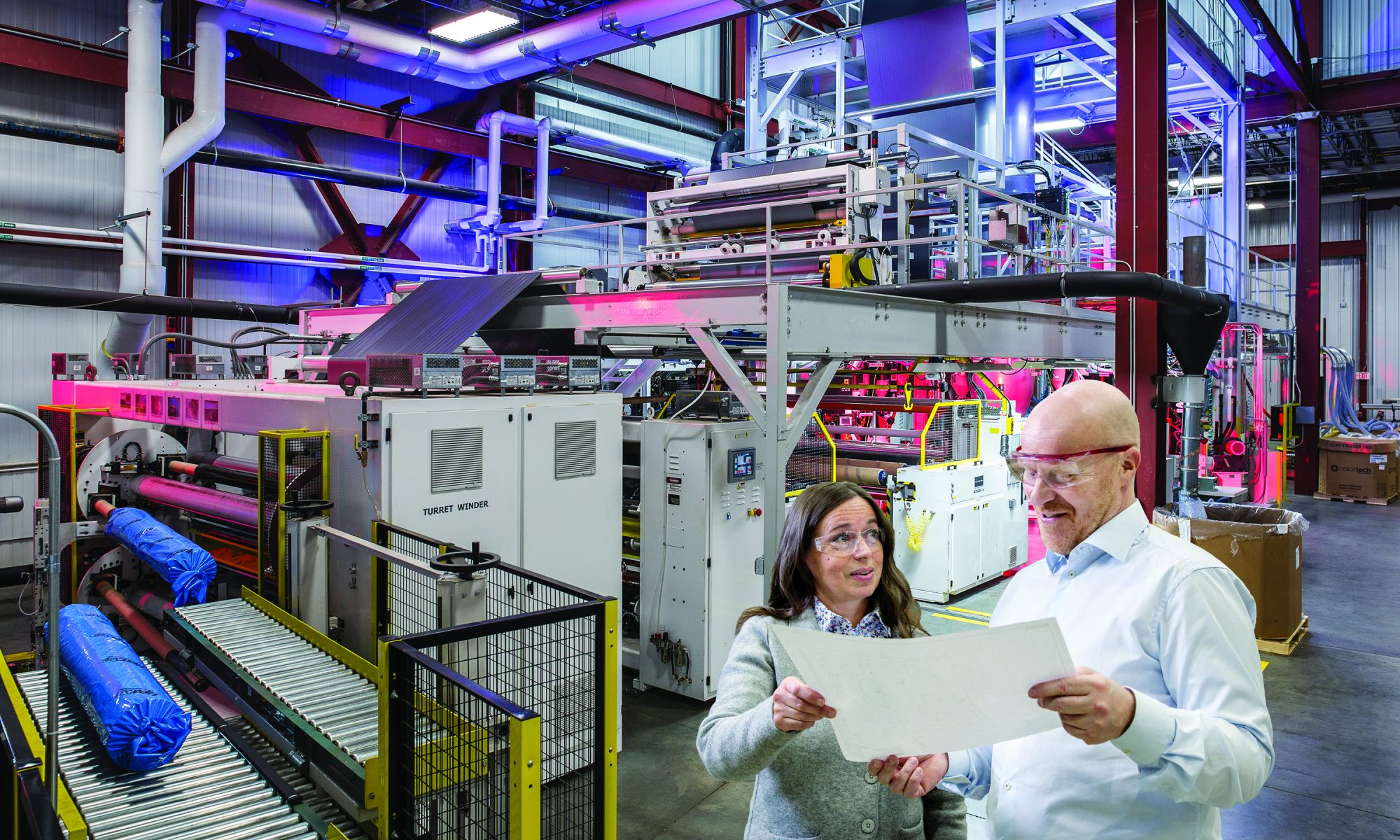
In part I of this blog, we reviewed the three types of feedscrew wear, the causes of that wear and corrective actions to eliminate it. In this blog, we’ll cover the importance of the feedscrew materials of construction.
The chemical compositions of the most widely used materials of construction are categorized as follows:
- Standard Materials
- Improved Corrosion
- High Corrosion
- Wear Resistant
- Specialty Tool Steel and Powder Metals
Standard Materials
The most widely-used base material in the industry is AISI 4140. It is a hardenable, alloy steel that offers good machinability and predictable behavior during manufacturing processes. It can be flame hardened to provide a minimum level of wear resistance. A wide range of wear resistant alloys can be applied (via PTA) for improved wear resistance. Another widely used material is AISI 4340. This steel offers improved yield strength when compared to AISI 4140. It is used for extrusion applications that require high torsional strength due to process requirements. Typical applications are small diameter screws and large screws with very deep channel depths. Its torsional strength is 10 percent higher than 4140. It has similar machining and welding characteristics to AISI 4140. Wear resistant alloys can also be applied to this material.
Nitralloy is a material widely used in Europe and Asia. The entire screw geometry is case hardened after machining using a specialized treatment process. This material is not recommended for applications requiring welding, so wear resistant alloys cannot be applied for improved wear protection.
Corrosion Resistant Materials
When a moderate level of corrosion resistance is required, precipitation-hardened stainless steels can be used. The two most popular steel grades for this are 15-5 PH® and 17-4 PH ®. These grades provide corrosion protection similar to 304 Type SS along with excellent physical properties. Higher levels of corrosion protection require specialty alloys that are very expensive. Chromium and nickel-chromium alloys are used in these applications. It is important to note that highly corrosion resistant alloys sacrifice torsional strength for the improved resistance. However, extrusion applications using Fluoropolymers or polymers with aggressive acid byproducts require these materials.

(corrosive wear feedscrew)
Materials Resistant to Abrasive Wear
Abrasive wear can occur on both the screw flights and screw root. Wear protection on the screw flight is normally improved through heat treatment or application of a wear resistant alloy. Wear on the screw root is more difficult to correct. Increased wear resistance is normally combated by using harder materials of construction. Increased hardness comes at the expense of the ductility and torsional strength of the base material. For larger diameter screws, the materials selection to correct wear issues is not ideal. On smaller diameter screws, typically less than 2.5 inches (63.5 mm), a variety of material choices are available to correct wear problems. Traditional tool steel and powder metallurgy tool steels can also be employed. These materials provide excellent protection against wear and improve the operating life of the screw. The downside is these materials are very difficult to machine and it’s difficult to maintain straightness during manufacturing. That is why these solutions typically only work for smaller diameter and shorter length feedcrews. For large diameter screws, encapsulation techniques using complex metal alloys are applied over the base metal using HVOF or D-Gun processes.

(abrasive wear feedscrew)
Here is a summary of materials, flight treatments and surface finishes for typical single screw construction:
Standard Materials
- AISI 4140 Cr Alloy Steel, R28-32
- AISI 4340 Cr Alloy Steel, R32-37
- Nitralloy 135M Cr-Al Alloy Steel
High Corrosion Resistance
- Hastelloy C276 (Ni Alloy Steel)
- Inconel 625 & 718 (Ni-Cr Alloy Steel)
- pH Stainless Steel
High Wear Resistance
- CPM 9V/10V
- PM-HIP Fe Alloy Steel
Flight Treatment
- Flame Hardening, RC 53-58 (AISI 4140)
Optional In-Lay Materials
- Colmonoy 56
- Colmonoy 83
- Stellite 6
Surface Finish
- Bare
- Chrome
- Nitriding
In the next blog, well cover how surface treatments or screw coatings can be used to improve screw wear. Any questions, e-mail marketing at marketing@davis-standard.com.
Cheers,
The D-S Connect Blog Team

short and simple very explanatory way of presentation
Hi Jasmine: Thank you for your kind words! Short and sweet is our goal. 🙂